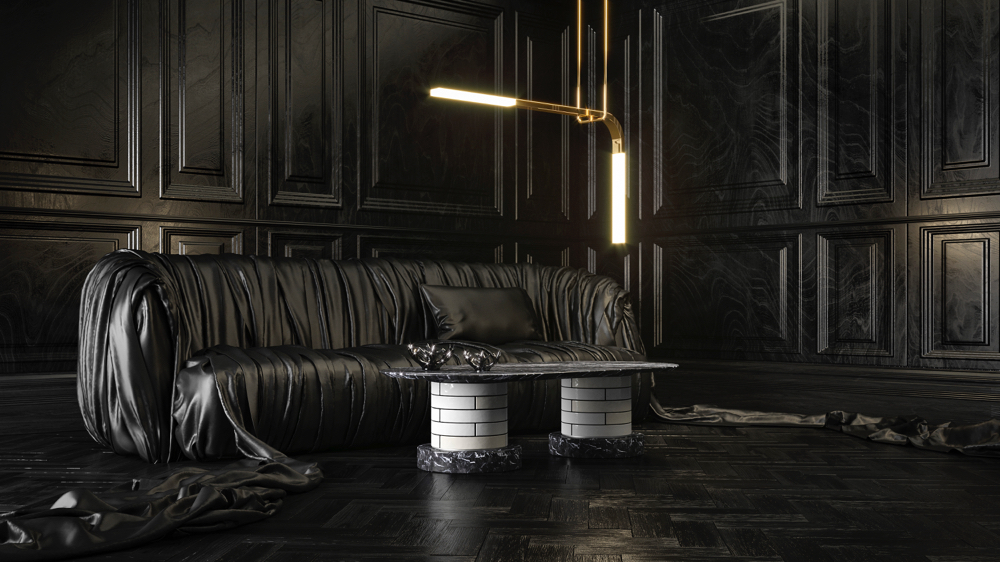Porcelain Bear have been an exciting part of the new generation of Australian lighting since the brand was established in 2010 by designer and ceramicist, Gregory Bonasera. Joined by industrial designer Anthony Raymond a short while later, the brand has continually pushed the boundaries of porcelain products in terms of scale and accuracy.
The latest collection Acrobat from Porcelain Bear was previewed over a year ago in prototype form and it received excellent media coverage on design platforms such as Dezeen and Yellowtrace at the time but it has taken until now to fully resolve the manufacturing methods to make the collection ready for ongoing production. “The initial pieces we made for customers toward the end of 2017 were a real headache to produce and involved countless hours of trial and error and a large number of failures”, says Gregory Bonasera, the founder of the brand. “We spent months tweaking and refining the way we made them until mid 2018 when we finally got it all working in a way we could repeat with absolute precision and confidence. Its surprisingly difficult to get porcelain to act the way you want it to when you are aiming for millimetre tolerances and firing at temperatures in excess of 1200 degrees celsius! In the end we discovered a way to fire bone china rather than porcelain that produced the right mix of translucency, tuffness and straightness”.
To mark this milestone of intense research and refinement, the brand has released a short film created by Melbourne’s Raft Studio. Produced as a 3-D animation with a dramatic, dark mood, the film completely eschews the current fashion for light and bright with greenery and natural materials or conversely, dusty pinks with acres of arches. Instead the film is set in a space that resembles a dark and slightly sinister version of Tara, the big house from Gone with the Wind - but with all the colour stripped out except the golden tones of brass. The music runs from chintzy soap opera theme to sparse synth based electronica. Click here to view
Directed by Sam Slicer, with sound by Paul Brandoli, the film was produced by Raft Studio with overall creative control by Anthony Raymond and Gregory Bonasera. “We felt that the Acrobat series was such an original concept that it needed to be treated very differently from anything we had done previously” says Bonasera. “We certainly didn’t want it to be part of an ‘on trend’ visual and cringed at the thought of it being portrayed in an industrial setting. We felt it should be dark and moody in an environment that was glamorous and opulent - something that was a dramatic contrast to Acrobat’s delicacy, poise and precision”.
Porcelain Bear and Raft Studio have been collaborating for a long time - almost from the very beginning of the brand in 2010. “They understand what we are about”, says Bonasera. “We have an affinity with them that is hard to describe but we always know they will bring more to the project than we ever thought possible. Nothing in this project was without significant challenges - not the product nor the film - but Anthony and I thrive on challenges and we are already incorporating things we have learnt in the process of developing the Acrobat series into new concepts we are currently working on”.
“The manufacturing of these lights was a technical feat”, continues Bonasera. “Because of the difficulties we were having achieving perfectly straight porcelain elements early on in the process, we approached some companies in Japan that are well-known for their technical ability. They politely declined to get involved claiming it was too difficult so we were forced to do it all ourselves. We are now immensely proud of having done so and happy that we have developed our own special methods and are making these extremely complex ceramic components in-house”.
While much has been made of the lighting collections name and how apt it is given the delicately balanced nature of the designs, it was in fact a name which only came with time. “We always have a nickname for new projects when we are developing them - something we can call a new design while we are developing it and deciding whether the idea is worth pursuing or not. In this case we called them our Ribbon lights for many months before we realised the similarities between the lights and the poise and precision of acrobats. When it came to making the film we decided to make reference to the original name and feature a ribbon of satin that ran through the set linking one shot to another. It’s not an obvious reference but there is a genuine story behind it”, says Bonasera.
While the film is a mind-blowing effort for a small Australian furniture and lighting company, the beauty of the lights should not be forgotten in the wake of all the cinematic magic. The collection of pendants come in four styles: ‘Double Act’, ‘Forward Bend’, ‘Backflip’ and ‘Flatbar’ with an additional element being added by a wall sconce version of the ‘Flatbar’ design.
“We see the lights from the Acrobat series as glamorous, opulent and extremely minimal pieces of jewellery for an interior”
Gregory Bonasera
Bonasera and Raymond seemed to have achieved what is normally only possible in large scale production environments in China, Thailand, Japan or Germany, while retaining the handmade element for which they are renown. Its always nice when a small company comes up trumps and Porcelain Bear do it time and again.
You can read more about the origins of Porcelain Bear in a previous post on Design daily from July 2016 here.
The Porcelain Bear showroom is located at 23 - 25 Derby st, Collingwood, Melbourne. You can visit the Porcelain Bear website here.









